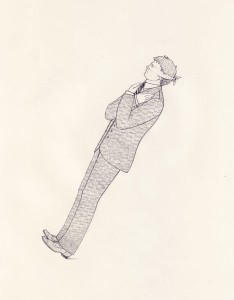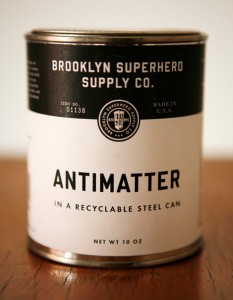Game Poem 29: Mask
This is a game that will accommodate any number of players, but will likely work best with a smallish number; definitely not less than three, probably no more than five or six. To play, you must create a mask. The mask will be constructed from a single piece of letter sized white paper (8.5×11, or A4). Just draw two simple eyes – just circles about the size of quarters – about halfway down the page, so they’re as far apart from each other as they are from the edges. The mouth will be a straight line drawn about halfway between the eyes and one of the short edges, just straight across, as wide as the eyes are apart. Do not poke or cut out the eye holes. You don’t need to attach a string or rubber band to hold the mask on anyone’s head – players will just hold the mask up in front of their faces when they want to use it.
Choose the most shy player to wear the mask first. That player will hold the mask in front of their face for a few minutes, and play the character that emerges. Everyone else will play as themselves. To begin, give the mask a simple gender-neutral name, like Sam or Alex. One of the players will greet the mask, and say hello. “Hello, Sam! How are you?” The player wearing the mask is now “Sam”, and will respond as such. When wearing the mask, the player should respond slowly and smoothly, without twitching around or making any quick or sudden moves. When someone talks to the mask, the mask should unhurriedly turn to face the person and respond naturally, in a voice that fits the mask. So, the mask will turn to look at the person who greeted them, and say hello back. All that is happening now is a regular conversation, just normal everyday chit-chat between the players and their new friend, the mask.
The conversation with the mask will last for a couple of minutes, and then someone will say goodbye, and the person who was wearing the mask will hand the mask to another player, and as they do, tear off a small piece of paper from the corner of the mask, and roll it into a small ball. The new player will hold the mask in front of their face, and play the same character. (So, really, there will be a number of “characters” in this game equal to the number of players, plus one: everyone playing themselves, and the character that emerges from the mask.) When the new player has taken on the role of the mask, someone should greet the mask again (“Hello, Sam!”), and you will have a short conversation again, only a couple of minutes. When the conversation is done, say goodbye, and a new player will take the role of the mask. Make sure that whenever a player takes off the mask, they take a small piece of paper from the corner of the mask, and roll it into a small ball. Also be mindful of who you are handing the mask to – try not to give it to the player who just handed it to you. You will do this a few times, just talking to your new friend, and taking turns between the all the players playing themselves, and playing the character of the mask.
Eventually, maybe after switching the mask between players three or four times, shortly after one of the players takes on the role of the mask, just after someone says hello to the mask character, one of the players will say, “I have to tell you something.” Then they will say the name of the person who is currently wearing the mask, and they will say, “…They mean to do you harm.” The mask can react to that revelation however they like, but remember that they should still be making slow, gentle movements, and they should still be using a voice that is appropriate to the character of the mask. Let this conversation go however it goes for another minute or two, and then say goodbye and pass the mask to another player.
Have another conversation or two, until at some point, one of the players will say, “You know…” And then they well say the name of the person who is currently wearing the mask, and add, “They mean to help you out.” (This person cannot be the same person who intends to do the mask harm, as you may have guessed.) The mask can react to this announcement however they like, but remember to maintain your steady movements and the voice of the mask. Continue the conversation for another minute or two, and then say goodbye and pass the mask to another player.
Eventually, the mask will be ready to confront the person who intends to do it harm. It should make sure that it can see both the person who wants to harm it, and the person who it knows will help it. When the mask is ready, after the players say hello, it can ask the person who intends to hurt the mask why they want to hurt them, what they intend to do, and so on. The mask can react to them however they wish, but this will be the last time that the players talk to the character of the mask. This time, when the player who is currently playing the mask takes the it off, you will determine the ultimate fate of your new friend. Each player will give the small paper balls that they have collected to either the person who will harm the mask, or the one who will help it. Whichever of the two has more paper balls will get their way – in the case of a tie, the person who had the mask last will decide the winner. Once the decision is made, that person – the helper or the hurter – may do whatever they want with the mask, save it or destroy it. After that, the character of the mask is gone, and the game is over.


